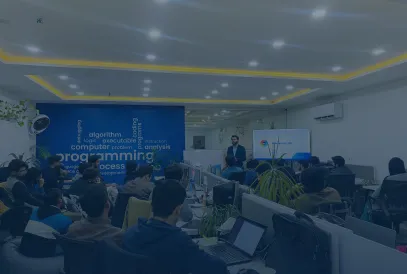Have you ever wondered why some software applications work flawlessly while others are riddled with bugs and glitches? Imagine eagerly awaiting the launch of a highly anticipated app, only to find that it's full of issues, and your excitement turns to frustration. We've all been there, right?
In software development, testing is the safety net that ensures your application meets user expectations, functions as intended, and operates without hiccups. Neglecting effective testing can result in costly setbacks, tarnished reputations, and disgruntled users.
This blog post will explore essential strategies and best practices to help you test your software effectively. Whether you're a seasoned developer or just starting in the field, you'll find valuable insights to improve your software testing processes.
We'll delve into various aspects of software testing, including test planning, types of testing, automation, and best practices for ensuring your software is not only bug-free but also performs optimally.
But before diving into the nitty-gritty of software testing, let's start at the beginning: understanding the importance of test planning and strategy.
How to Test Your Software Effectively? A Developer's Guide 2023
Understanding Software Testing and Why It Matters?
When developers build software, it gets tested to ensure it works as intended and has no bugs or glitches. You can think of it as trying out a video game to see if it has any problems like characters getting stuck or the game crashing. Testing helps find and fix these issues before many people use the software.
The reason why software testing matters to developers is simple. You want your software to function properly and not misbehave when people use it. It helps you identify and fix problems early and saves time and money. Additionally, It ensures users have a better experience with the software and trust that it will work as expected.
Thus, software testing is like quality control for computer programs, making them reliable and safe for everyone to use.
What Is The Software Testing Process?
You have to follow five steps if you want to conduct software testing effectively;
Test planning: In this step, you must figure out the part of the software you want to test and the kind of test methodology you’ll be using. And the resources you’ll need to do so. It will be a testing to-do list where you plan to ensure everything gets tested thoroughly.
Test design: You create detailed test cases with instructions for testing each part of your software. The test design or cases are step-by-step instructions to check if the software works correctly.
Test execution: This time, you run the tests you’ve designed in the previous stage. You’ll use the test cases in this step to see if your software is working as it should by clicking buttons, entering data and observing its behavior.
Bug tracking and management: Here, you document any bug or error encountered while testing. You describe what went wrong and how to reproduce the problem so developers can fix it later.
Test reporting: A documented version of the test conducted summarizes what tests you ran, what issues you found, and how severe they are. It helps everyone involved understand the state of the software and what still needs to be fixed or tested.
Types of Software Testing
If you are just starting, you may be confused about the software testing methods available. Here is the breakdown of various software testing you can conduct
There are two main approaches used for software testing: manual and automated. Which method should you choose? The choice between manual and automatic testing depends on various factors including the project's requirements, budget, timeline, and the nature of the software being developed.
Manual testing may be more cost-effective for small or short-term projects than setting up an automated testing infrastructure. On the other hand, you can integrate automated testing in the CI/CD pipeline for rapid feedback during the development process.
In practice, many projects use a combination of manual and automated testing to leverage the strengths of both approaches. The choice between the two methods should be based on the project's specific needs and constraints.
The common testing methods that you can use are listed below;
Unit testing: (for conducting tests on individual components or functions of software)
Integration testing: (to see if different components of the software work seamlessly together or not)
Functional testing: (to see if the software is working as specified in requirements)
User interface: (UI) testing: (To audit the graphical user interface for usability, aesthetics, and functionality.)
Performance testing: (to test the software’s functionality under different conditions, like load, stress or scalability)
Security testing: (to identify security issues, weaknesses and vulnerabilities)
Each type of testing serves a specific purpose in the software development lifecycle and helps ensure that the software meets its quality and functionality requirements. Depending on the project's needs, one or more of these testing types may be conducted.
Best Practices For Software Testing
If you want to effectively conduct software testing and get the desired results out of it, follow these best practices;
- Start testing as early as possible in the development cycle so you can catch issues early on and fix them at a low cost.
- Understand the software requirements beforehand, which will be the basis for test case development and validation.
- Go into detail while creating test cases and outline what will be tested, how it will be tested, and what success criteria will be used. This helps in ensuring that all aspects of the software are covered.
- Use automation to minimize redundancy wherever possible.to save time, reduce human error, and provide quick feedback on code changes.
- Don't rely solely on one type of testing. Incorporate various testing types such as unit testing, integration testing, functional testing, performance testing, security testing, and usability testing. Each type of testing serves a different purpose in verifying the software's quality.
- Create realistic and diverse test data to simulate different usage scenarios. Test data generation tools can help you generate data for other test cases.
Follow the above-mentioned best practices to ensure your software works flawlessly for users.
Last Thoughts
In closing, software testing is the bridge that connects development with the end-users, ensuring that the final product is a reliable, secure, and efficient solution. By adhering to these best practices and fostering a culture of quality, developers can confidently navigate the complexities of modern software development, knowing that their creations will stand the test of time and technology.

















